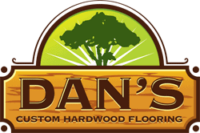Different Types of Hardwoods
There are a lot of different hardwood flooring types, these types are divided into domestic and exotic woods. The area you live in will affect which exotic hardwoods can be installed in your home. Domestic hardwoods are much more stable and can be used in most of the US without any issues. Hickory, oak and maple are some of the most commonly used species. Our team is a great resource for helping you decide what species of hardwood is best for your home.
RED OAK
Red oak is a great hardwood flooring choice and the classic american hardwood. The grains in red oak are good for helping to mask scratching or debris. The red oak has a classic look and the tone of the wood is warm.
Janka: 1290
Grades: Clear, Clear, #1, #2. #3
WHITE OAK
White oak has grown in popularity recently for many reasons. The warm color of the wood and the beautiful wood grain are part of why it is such a beloved option. White oak is stronger that red oak and also masks hair and debris on the floor well.
Janka: 1360
Grades: Clear, Select, #1, #2. #3
MAPLE
Maple has a light grain variation and has a creamy white color. Maple is commonly used in gyms because of the uniform look of the wood. The light grain and color variations helps maple to mask scratching and other damage.
Janka: 1450
Grades: Clear, Select, 2nd & btr, 3rd & Btr
WALNUT
Walnut is a beautiful wood that has been popular in American homes for decades. The darker appearance on walnut is one of the appealing factors, the color is creamy and soft which helps walnut flooring feel warm and inviting. Walnut is a very soft wood and is not a great choice for places with children or pets.
Janka: 1010
Grades: Select, Rustic
HICKORY
Hickory is a tough wood and is one of the hardest American grown trees that is mass harvested. Hickory has a drastic color change in it and beautiful grain patterns. Hickory is a popular cabinet wood as well. Hickory is great for homes with pets.
Janka: 1820
Grades: Select, #1, #2, Rustic
BRAZILIAN CHERRY
Brazilian cherry is not a domestic wood but is an exotic. The red appearance of Brazilian cherry is sought after and the wood is very strong. Brazilian cherry works well in homes and commercial spaces. The strength of this wood makes it hard to dent and scratch.
Janka: 2350
Grades: Clear, Select, Rustic
Hardwood Grading
Clear
Clear is a premium grade and features nearly no defects but only some minor imperfections and slight color variations. Clear also have consistent grain variation and the longer board lengths average 3 ¾’.
Select
Select is close to clear but has more natural characteristics including burls, pin wormholes and mineral streaks. The select grade has some minor color and rain variations and board lengths average 3 ¼’.
#1 Common
#1 common contains some additional natural characteristics like small sound defects, bird pecks and the characteristic mentioned above. The #1 common grade has a medium color and grain variations and the board lengths average 2 ¾’.
#2 Common
#2 common has additional natural characteristics including wormholes, flags, small sound knots and checks. There are more major color variations and board lengths average 2 ¼’.
#3 / Rustic
Rustic grade has a much more rustic appearance with unsound knots, open knotholes, splits and grub holes. The wood features drastic color and grain variations and has shorter board lengths.
All characteristics included in higher grade are allowed in the lower graces. Some wood species like maple and birch are graded differently with a system that includes Firsts, Seconds, Thirds and these are comparable to select, #1 common and #2 common.
PLANK STYLES
Plank styles
Hardwood flooring comes in a variety of plank widths including 2 1/4″, 3 1/4″, 4 1/4″, 5 1/4″, and 7″. The wider planks may add a beautiful visual but it does affect the stability of the wood. Some people choose to mix widths for a visual impact and increased durability. The wider widths cost more.
The majority of food flooring is flat sawn or plain sawn. Flat sawing produces grain patterns with flame shapes and cathedral arches. Rift and quarters sawing shows off more vertical or radial grains. Flat sawn wood is generally cheaper, easier and cheaper to mill so it is more common that rift and quarter sawn which can be very expensive. The radial grain in the rift and quartered wood helps to increase the dimensional stability and features a more consistent appearance.

